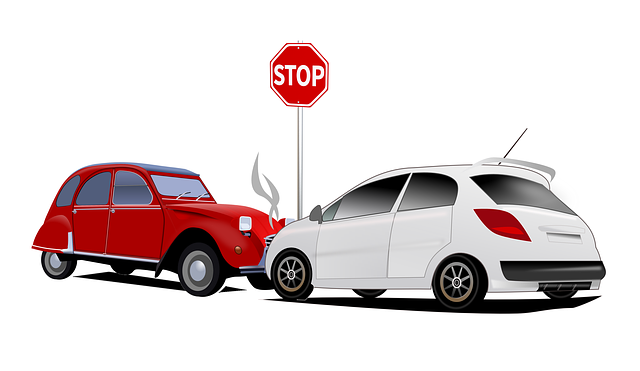Car insurance premiums in the U.S. have risen 19.2% due to inflation, rising claims, and vehicle repairs. Drivers can manage costs by comparing quotes, maintaining a clean driving record, considering higher deductibles, and choosing policies suited to their profile and needs. Comprehensive and collision insurance protect against non-collision damages and accidents, respectively, while uninsured/underinsured motorist coverage shields against financial harm from drivers without insurance. To navigate quotes, gather personal info, obtain multiple quotes, evaluate policies based on deductibles and needs, regularly review and update policies, and prioritize comprehensive, collision, and adequate uninsured/underinsured coverage for peace of mind and protection.
The recent surge in car insurance premiums, up 19.2% across the U.S. in a year, underscores the importance of informed decision-making for drivers. This article delves into crucial aspects of auto insurance, equipping you with knowledge to navigate rising costs effectively. From comprehending premium factors to comparing quotes and choosing coverage options like comprehensive, collision, and uninsured/underinsured motorist protection, each section provides insights to tailor a policy that offers peace of mind on the road while aligning with your specific needs.
- Understanding Car Insurance Premiums: The Rising Costs
- Comprehensive vs. Collision Coverage: What's Essential?
- Protecting Yourself from Uninsured Drivers
- Navigating Insurance Quotes: A Step-by-Step Guide
- Tailoring Your Policy for Peace of Mind on the Road
Understanding Car Insurance Premiums: The Rising Costs

Car insurance premiums have been on the rise, with a notable 19.2% increase in the U.S. from November 2022 to November 2023. This surge is attributed to various factors such as inflation, increasing claims due to accidents and natural disasters, and the rising cost of vehicle repairs and replacement parts. Understanding these premium trends is crucial for drivers who want to make informed decisions about their coverage options.
Drivers should know that insurance companies consider multiple variables when calculating premiums, including their driving history, age, location, vehicle type, and coverage chosen. By being aware of these factors, individuals can take proactive steps to manage their costs. This may involve comparing quotes from different insurers, maintaining a clean driving record, choosing higher deductibles, or opting for policies that align with their specific risk profile and needs.
Comprehensive vs. Collision Coverage: What's Essential?

Comprehensive and collision coverage are both critical aspects of auto insurance, offering distinct yet complementary protections for drivers. Comprehensive insurance steps in when your vehicle faces non-collision related damages, such as theft, vandalism, or natural disasters. This type of coverage is invaluable for those who value peace of mind, especially in high-crime areas or regions prone to specific weather events. On the other hand, collision coverage focuses on accidents involving another vehicle, regardless of fault. It protects against damage to both your car and the other party’s vehicle, up to specific limits. While collision insurance may not cover all incidents, it is essential for driver protection in scenarios like fender benders or rear-end collisions.
Understanding the difference between these two types of coverage allows drivers to tailor their policies effectively. Many drivers opt for comprehensive and collision coverage together as a solid foundation for their auto insurance needs, ensuring they’re prepared for a wide range of potential risks while on the road.
Protecting Yourself from Uninsured Drivers

Uninsured drivers pose a significant risk to all road users, and their absence of insurance protection can leave victims facing steep medical bills and other financial burdens in the event of an accident. Comprehensive auto insurance plays a crucial role here by covering damages and losses when you’re involved in an accident with such drivers. This includes not only the cost of repairs to your vehicle but also medical expenses for any injuries sustained.
By including uninsured and underinsured motorist coverage as part of your policy, you gain added protection. This ensures that if another driver lacks insurance or has inadequate coverage, you’re still shielded from bearing the brunt of the financial consequences. It’s a prudent step towards safeguarding yourself and your finances while navigating the roads, offering peace of mind knowing you’re prepared for unforeseen circumstances.
Navigating Insurance Quotes: A Step-by-Step Guide

Navigating insurance quotes can seem overwhelming, but with a systematic approach, drivers can make informed decisions. Start by gathering information about your driving history and claims experience. This includes checking your credit score, which can impact rates, and reviewing any previous accidents or violations. Next, obtain quotes from multiple providers by visiting their websites or using online comparison tools. Ensure you’re comparing policies with similar coverage levels to get an accurate picture.
When evaluating quotes, pay attention to deductibles—the amount you pay out-of-pocket before insurance covers the rest. Lower deductibles typically mean higher premiums but provide peace of mind. Read the policy details carefully, understanding what’s covered and any exclusions. Consider your specific needs, such as comprehensive or collision coverage, and ensure the policy includes any necessary add-ons for specialized risks. Regularly review and update your policy to match changing circumstances, ensuring you stay protected on the road.
Tailoring Your Policy for Peace of Mind on the Road

When tailoring your car insurance policy, prioritize comprehensive coverage and collision protection to safeguard against unexpected events like accidents or natural disasters. These provisions ensure that your vehicle is repaired or replaced, offering peace of mind while on the road. Additionally, incorporating uninsured and underinsured motorist coverage is crucial for financial security if you’re involved in an accident with a driver who doesn’t have adequate insurance.
Assessing your specific needs and driving habits is key to making informed decisions. If you frequently drive in areas prone to accidents or severe weather, enhancing your policy with additional protections can be beneficial. Conversely, if you primarily use your vehicle for short daily commutes, a more basic policy might suffice, helping you avoid unnecessary expenses. Regularly reviewing and comparing quotes allows you to make adjustments as your needs change, ensuring you always have the right coverage.
In light of these rising insurance costs, it’s crucial for drivers to educate themselves about their coverage options. By understanding the differences between comprehensive and collision coverage, recognizing the importance of uninsured and underinsured motorist protection, and following a step-by-step guide to navigating quotes, individuals can tailor their policies to suit their needs and drive with peace of mind.



